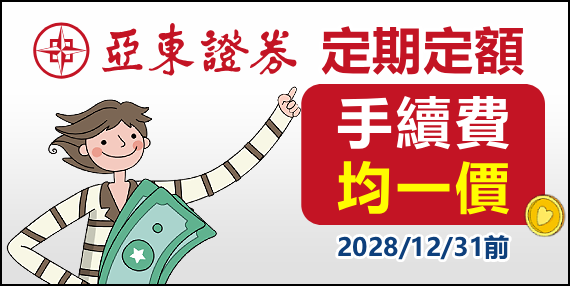05.2020 Life Guide
Say goodbye to incontinence
Dr. Far Eastern Memorial Hospital /


The so-called incontinence is the involuntary leakage of urine. According to statistics, about one third of women have trouble with urinary incontinence, and the older they are, the higher the incidence is. The female congenital urethra is short, and may experience the birth canal damage during production, resulting in the relaxation, fracture or atrophy of the structure supporting the bladder neck. In addition, the hormone deficiency after menopause, resulting in the atrophy of the urethral mucosa and the relaxation of the pelvis, are the risk factors of inducing or aggravating urinary incontinence.
Although urinary incontinence is not a threat to life safety, it often causes psychological, life and health problems of patients, including skin, urinary tract infection, anxiety, sleep interruption, lack of self-confidence, social isolation, personal health problems, and then affects the quality of life. Some patients even dare not go out with the tampons on. They will always wear dark pants, because they are afraid of urine stains seeping out and others smelling urine, so their social life will be interrupted.
Many people have incorrect misconceptions about urinary incontinence, such as: urinary incontinence is a part of aging, urinary incontinence is the only way for women, urinary incontinence is a normal phenomenon after childbirth, and urinary incontinence pad can protect you And so on, causes the urine incontinence woman to delay to seek medical treatment time. About one in four women over 40 years old in Taiwan has urinary incontinence. The number of patients is more than 1 million, but 80% of them have not been treated. In fact, urinary incontinence can be treated, and it is not the inevitable fate of women. At present, there are quite a lot of treatment methods. As long as we find out the causes of urinary incontinence through appropriate examination, and then through appropriate treatment, most of them will have good results.
Types of urinary incontinence
* stress urinary incontinence: when the patient's abdominal pressure rises, such as coughing, sneezing, lifting heavy objects, jumping or laughing, leakage of urine occurs, which is the most common type of female urinary incontinence.
* urgent urinary incontinence: when there is a sense of urination, you can urinate on your pants before you arrive at the toilet, which often causes frequent or urgent urination.
* mixed urinary incontinence: including stress and urgent urinary incontinence.
* overflow urinary incontinence: due to long-term suffocation or neuropathy, the bladder volume becomes larger and lacks tension, the bladder expands excessively, and the pressure is greater than the urethra pressure, resulting in leakage of urine, which often occurs in severe diabetic patients.
* constant leakage incontinence: the patient who continuously leaks urine all day, often occurs in the patients with serious damage of urinary tract or urinary tract tissue.
* temporary urinary incontinence: usually occurs in patients with acute bladder inflammation, and will be cured as long as the cause of infection is treated.
People in the following situations are more likely to leak urine:
* pelvic muscle injury caused by prolificacy or dystocia: vaginal natural production may cause pelvic floor muscle nerve injury, resulting in weak or broken pelvic floor fascia.
* women after menopause or menopause: due to the lack of female hormonal after menopause, the mucosa of vagina and urethra atrophy and aging, resulting in urethra atresia.
* obese women.
* long term respiratory diseases, such as asthma, cough, etc.
Treatment of urinary incontinence
* non operative treatment
In addition to drug treatment, non-surgical treatment includes the following treatment methods -——

⊙ physiological feedback assisted pelvic floor muscle movement therapy: using the biological feedback instrument, the contraction of the muscle can be expressed in a visual way, so that the patient can directly see the curve, number or sound changes from the monitor screen, learn how to control the contraction of the pelvic floor muscle, and then enhance the support of the pelvic muscle on the urethra and bladder.
⊙ electric stimulation or magnetic wave therapy: use external magnetic field to generate electric current or directly use electric current to stimulate, make the pelvic floor muscle tissue produce involuntary contraction, make the gradually weak pelvic floor muscle become strong, so as to improve urine leakage.
Laser treatment: the use of laser light into heat, promote the reconstruction and regeneration of collagen and elastic fiber in the mucosa, improve the muscle tension of the pelvic floor. The treatment time is only 15 minutes, and there is no need for anesthesia, usually the effect can be felt after one month.
* surgical treatment
If the non-surgical treatment can not be improved, or the patients with moderate or severe urinary incontinence can be treated with "tension-free vaginal sling operation". A synthetic strap about 1.1cm wide can be placed in the middle of the urethra, which will not increase the pressure in the urethra. When the patient's abdomen is forced, it can timely provide the antagonistic effect of the urethra, form the middle of the urethra bending, and prevent urinary incontinence 。 This is a minimally invasive operation with small wound, short operation time and short hospital stay. The success rate is as high as 90% and 85% five years later. In recent years, the development of single incision urinary incontinence surgery, there is only a 1.5cm wound on the inner side of vagina, there is no wound outside the body, and there is no need to remove the suture. The pain is very low, and the patient recovers quickly.
In many people's view, urinary incontinence is a shameful thing to talk about, and therefore avoid medical treatment. At present, the average life span of Chinese people is as high as 80.7 years old. We should not only live long, but also live well. In order to improve the quality of life, people should pay more attention to the problem of urinary incontinence. We call on the people who have this problem to seek the assistance of doctors as soon as possible, cooperate with the medical treatment and get improvement as soon as possible.




















